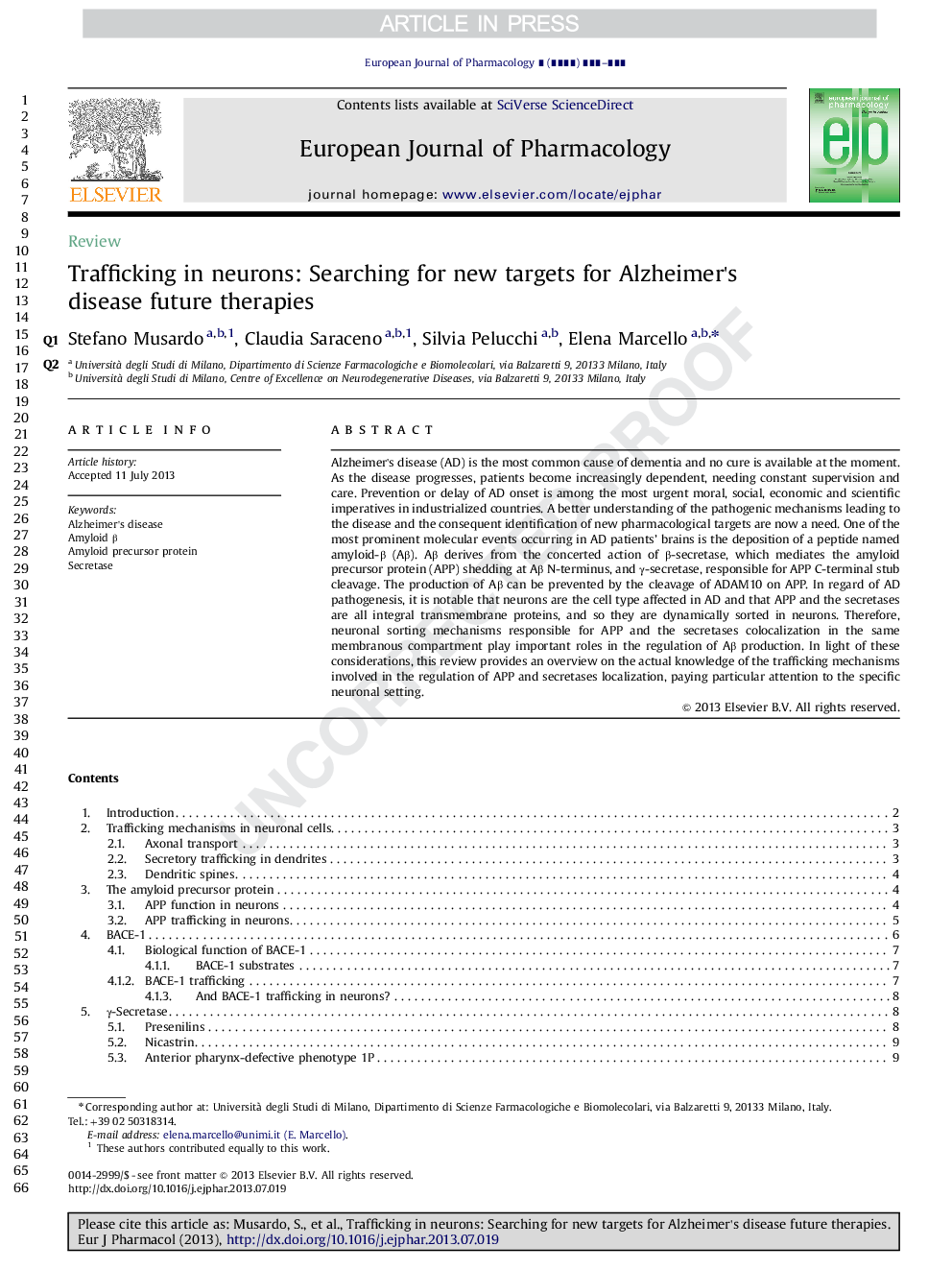| Article ID | Journal | Published Year | Pages | File Type |
|---|---|---|---|---|
| 5828296 | European Journal of Pharmacology | 2013 | 23 Pages |
Abstract
Alzheimer's disease (AD) is the most common cause of dementia and no cure is available at the moment. As the disease progresses, patients become increasingly dependent, needing constant supervision and care. Prevention or delay of AD onset is among the most urgent moral, social, economic and scientific imperatives in industrialized countries. A better understanding of the pathogenic mechanisms leading to the disease and the consequent identification of new pharmacological targets are now a need. One of the most prominent molecular events occurring in AD patients' brains is the deposition of a peptide named amyloid-β (Aβ). Aβ derives from the concerted action of β-secretase, which mediates the amyloid precursor protein (APP) shedding at Aβ N-terminus, and γ-secretase, responsible for APP C-terminal stub cleavage. The production of Aβ can be prevented by the cleavage of ADAM10 on APP. In regard of AD pathogenesis, it is notable that neurons are the cell type affected in AD and that APP and the secretases are all integral transmembrane proteins, and so they are dynamically sorted in neurons. Therefore, neuronal sorting mechanisms responsible for APP and the secretases colocalization in the same membranous compartment play important roles in the regulation of Aβ production. In light of these considerations, this review provides an overview on the actual knowledge of the trafficking mechanisms involved in the regulation of APP and secretases localization, paying particular attention to the specific neuronal setting.
Related Topics
Life Sciences
Neuroscience
Cellular and Molecular Neuroscience
Authors
Stefano Musardo, Claudia Saraceno, Silvia Pelucchi, Elena Marcello,
